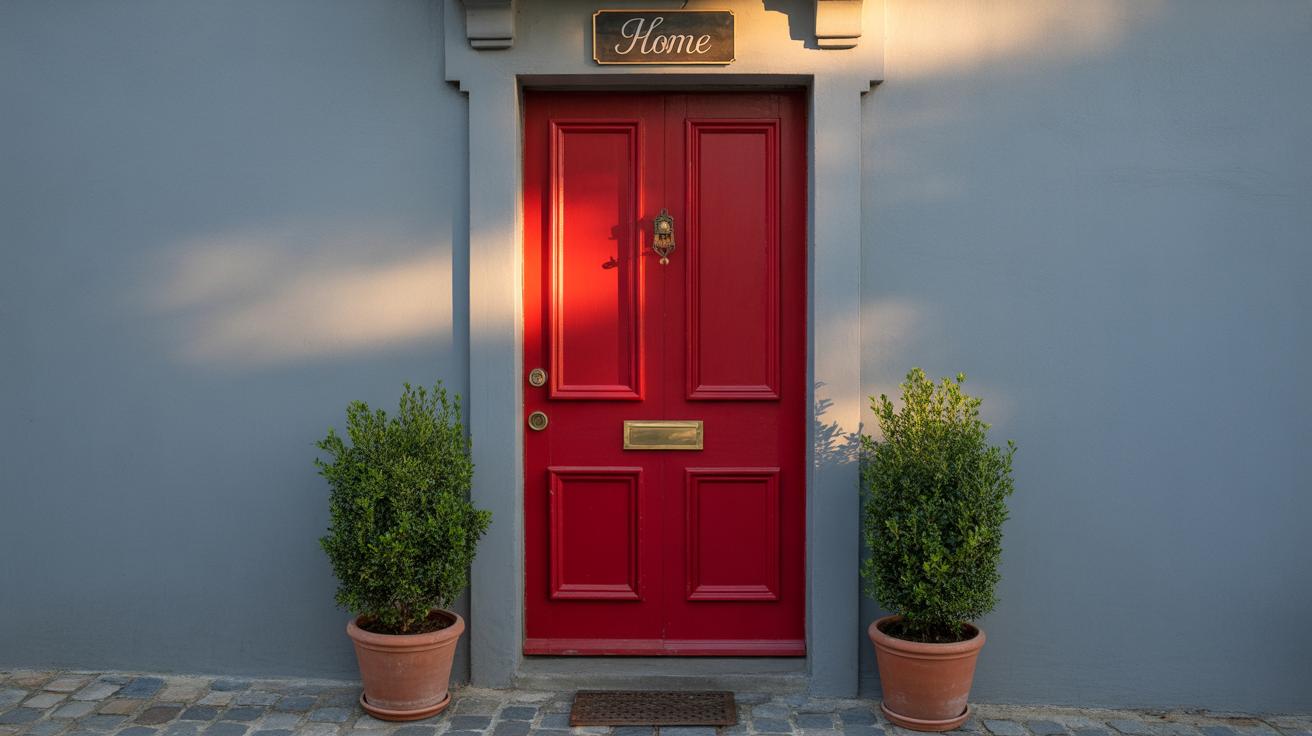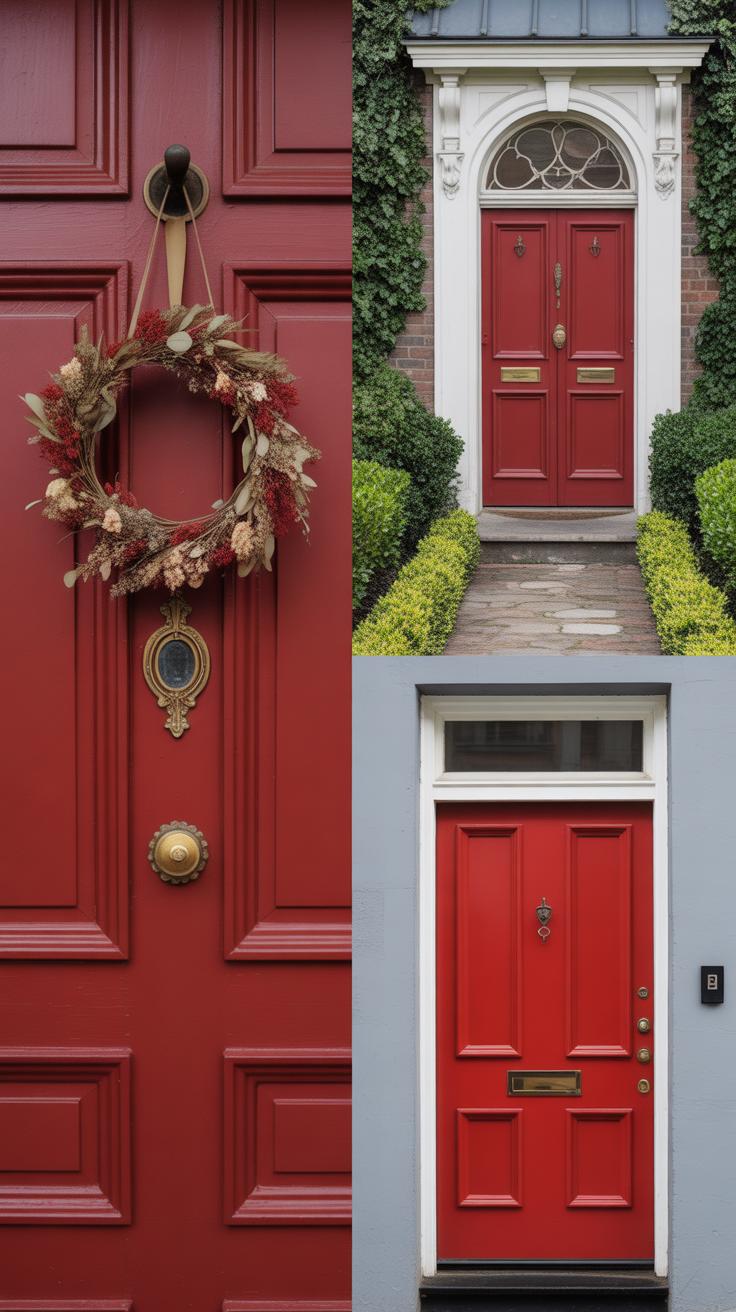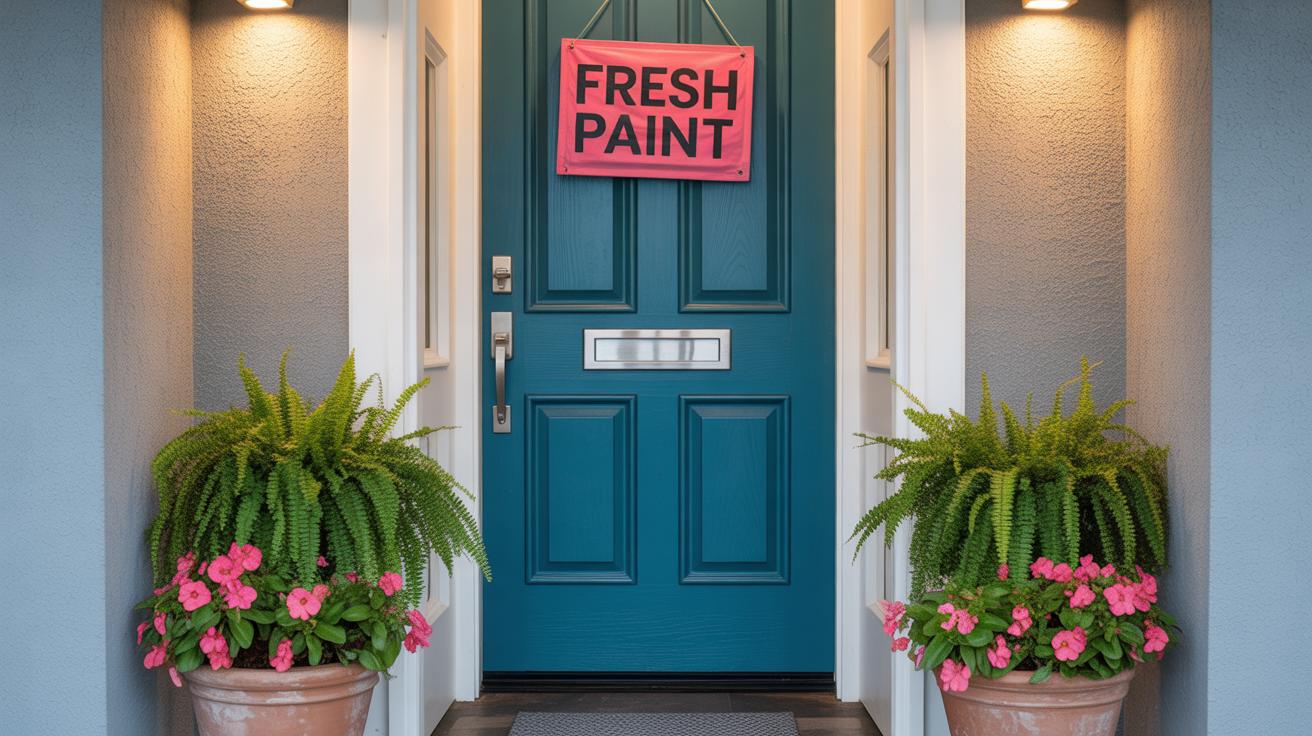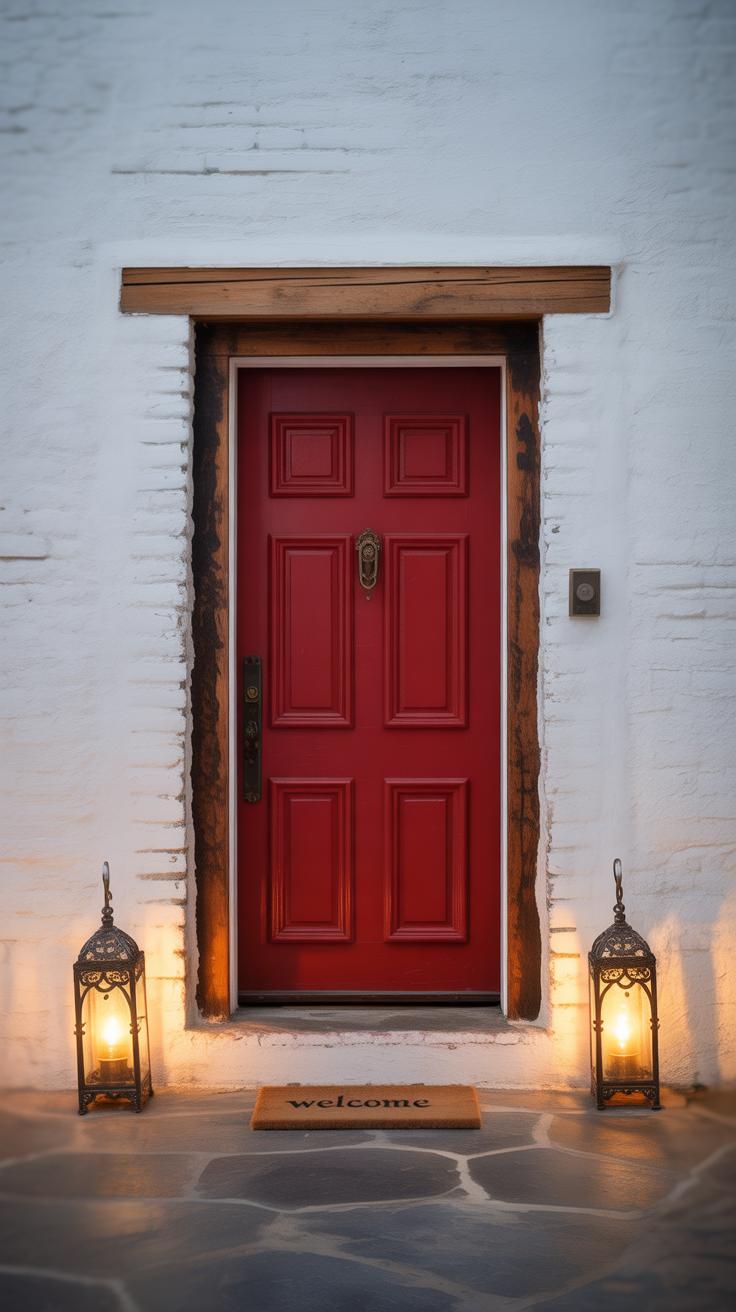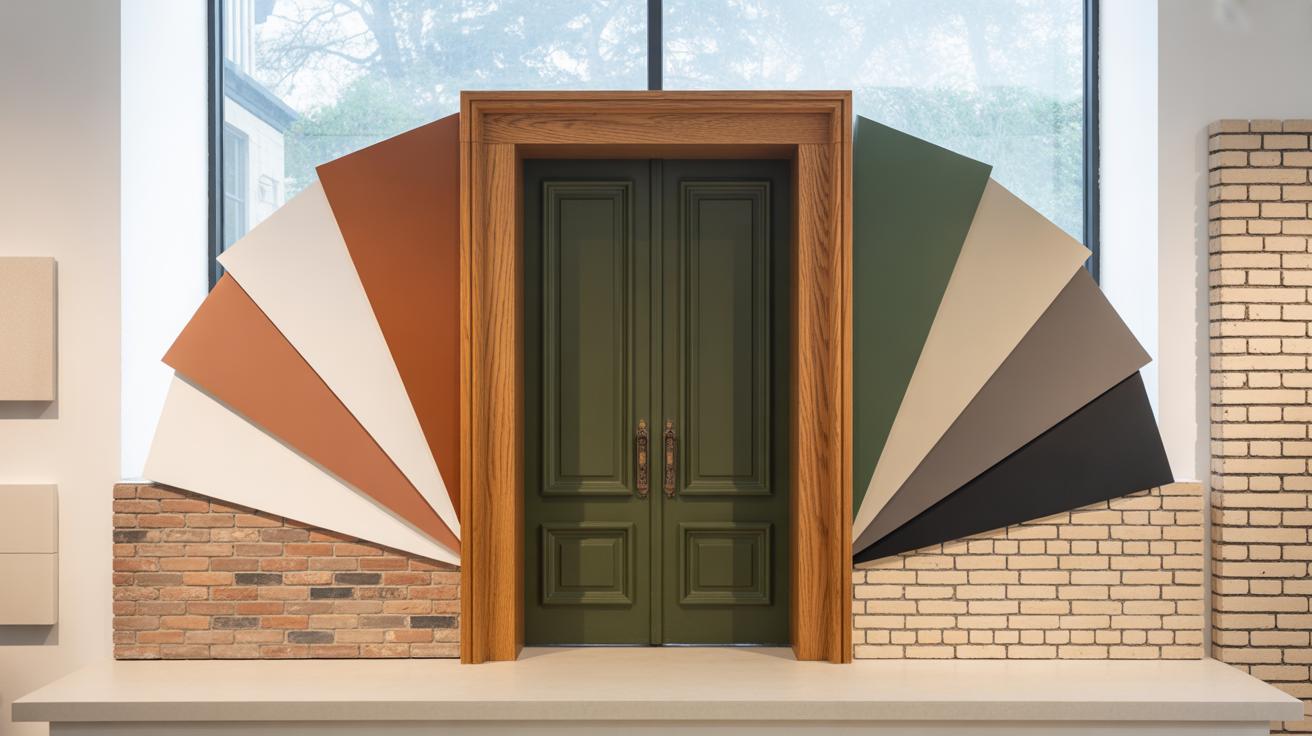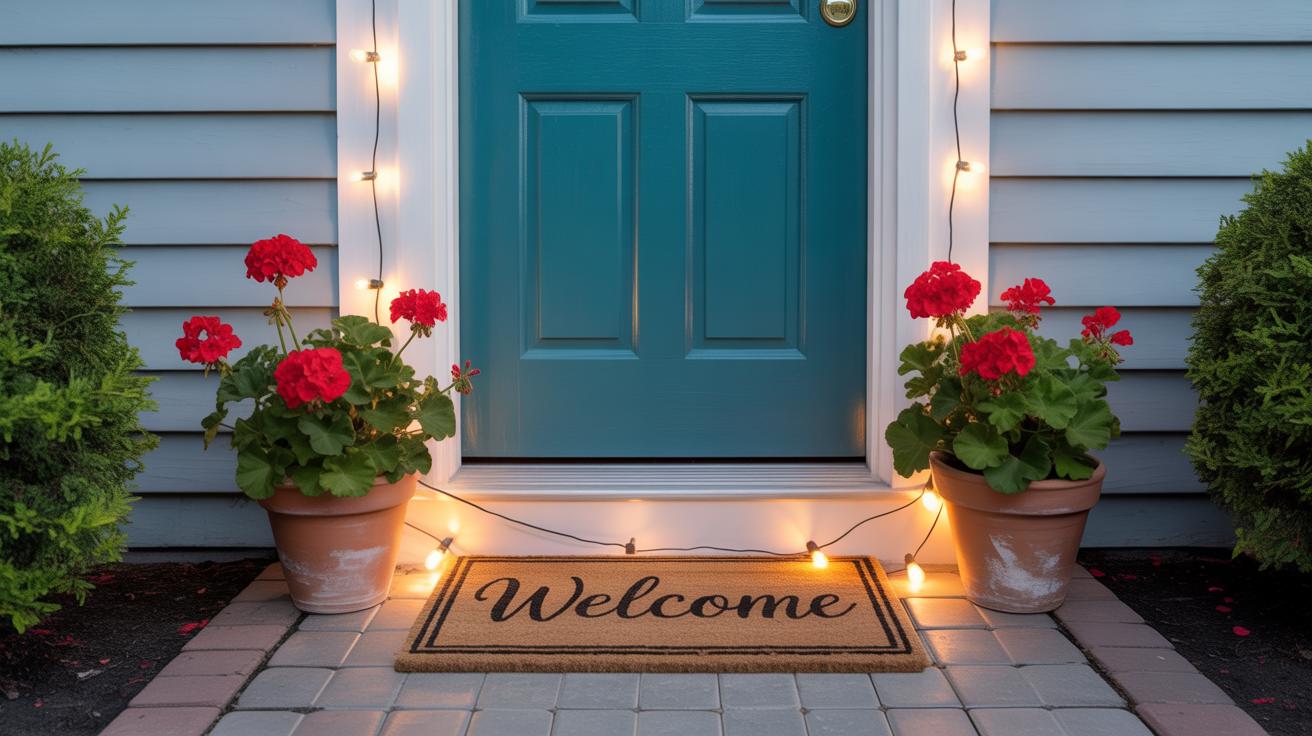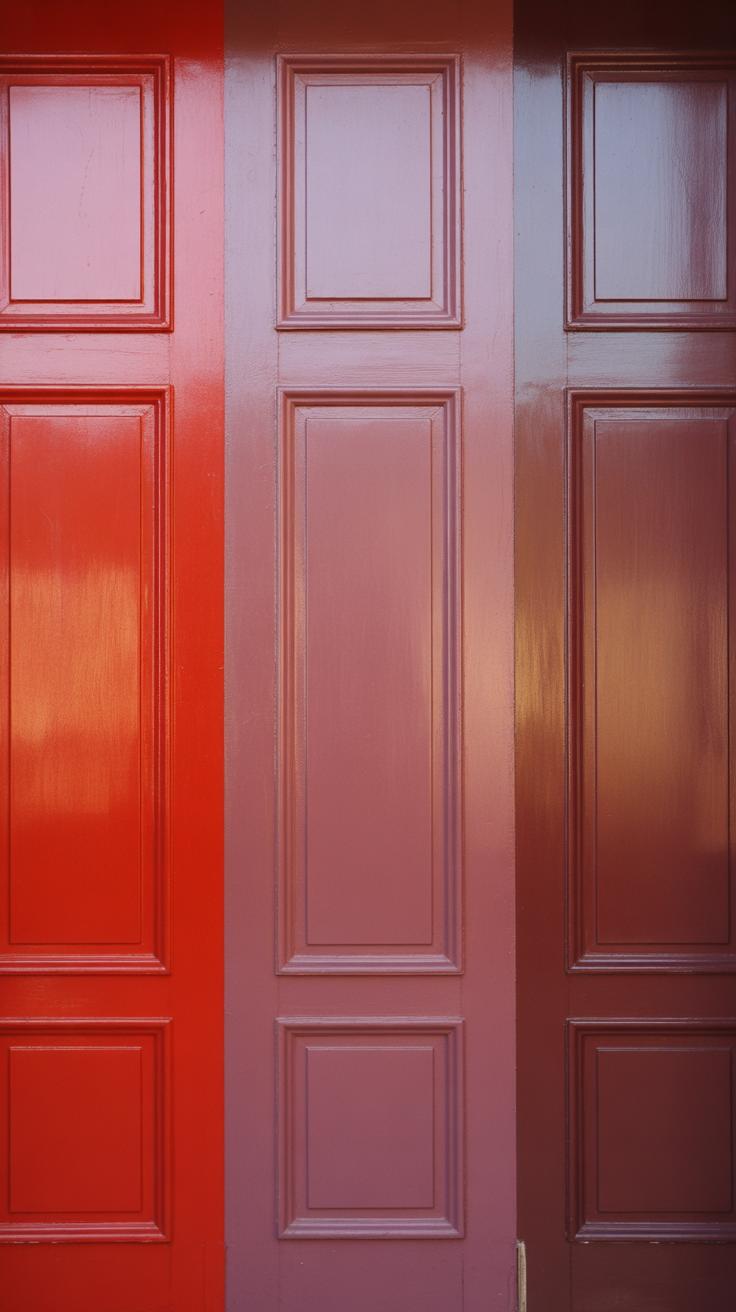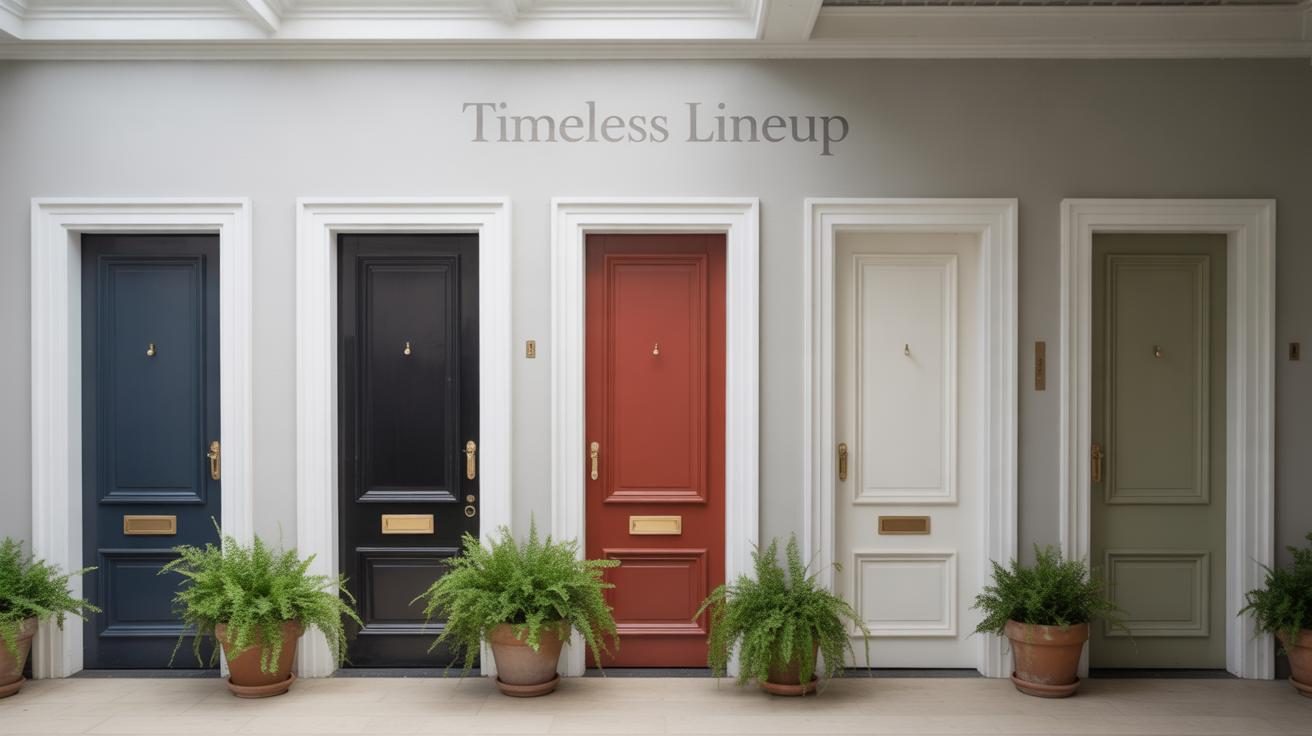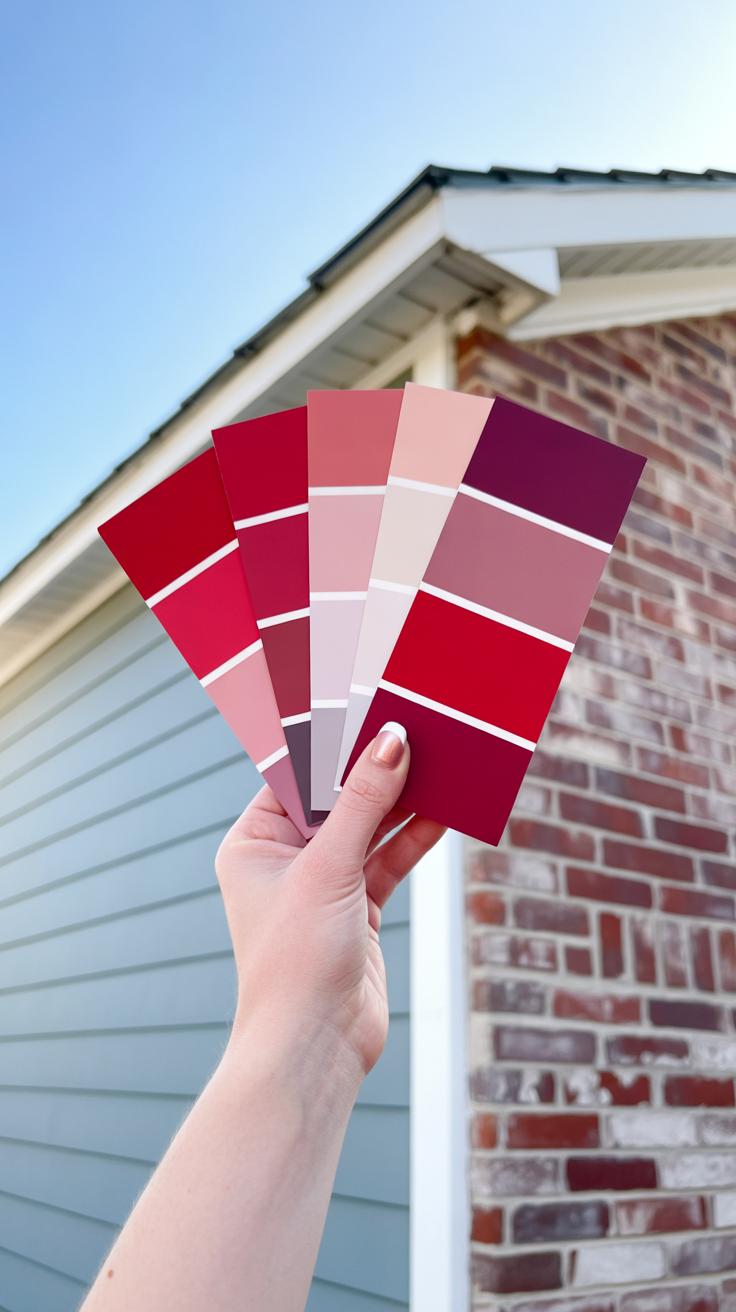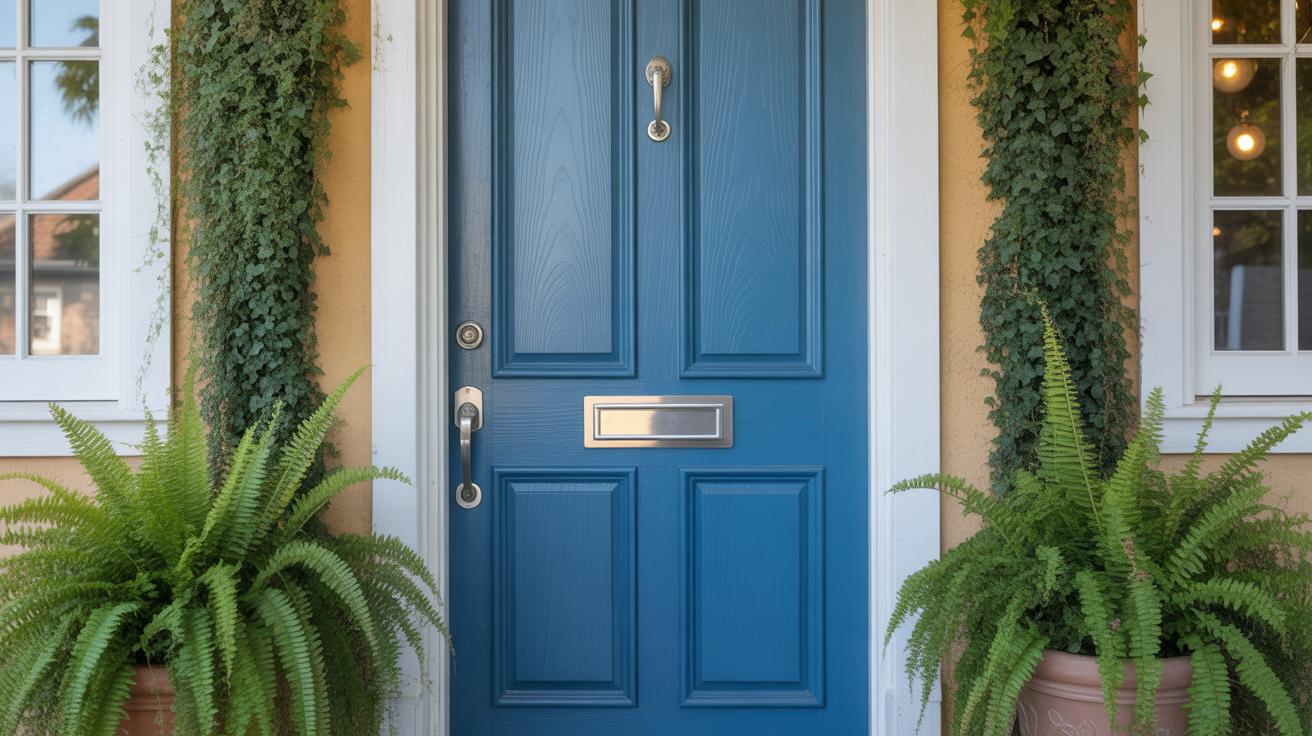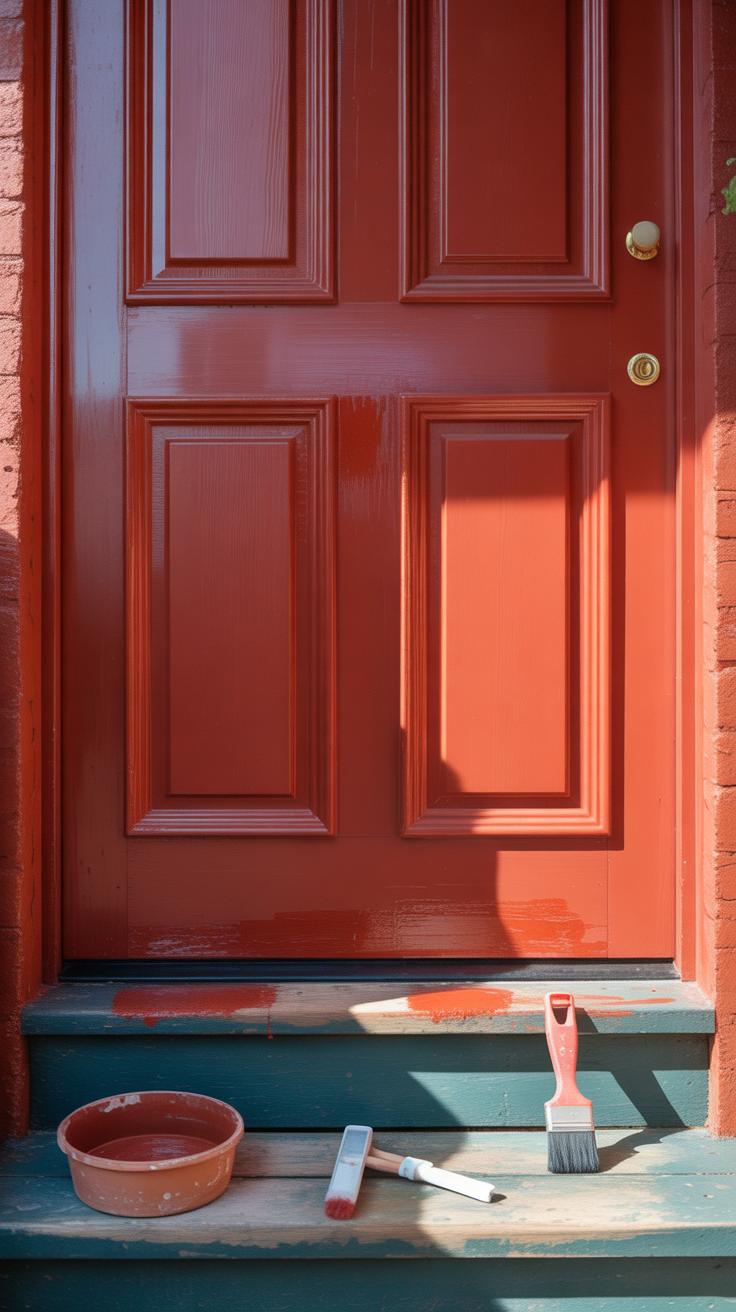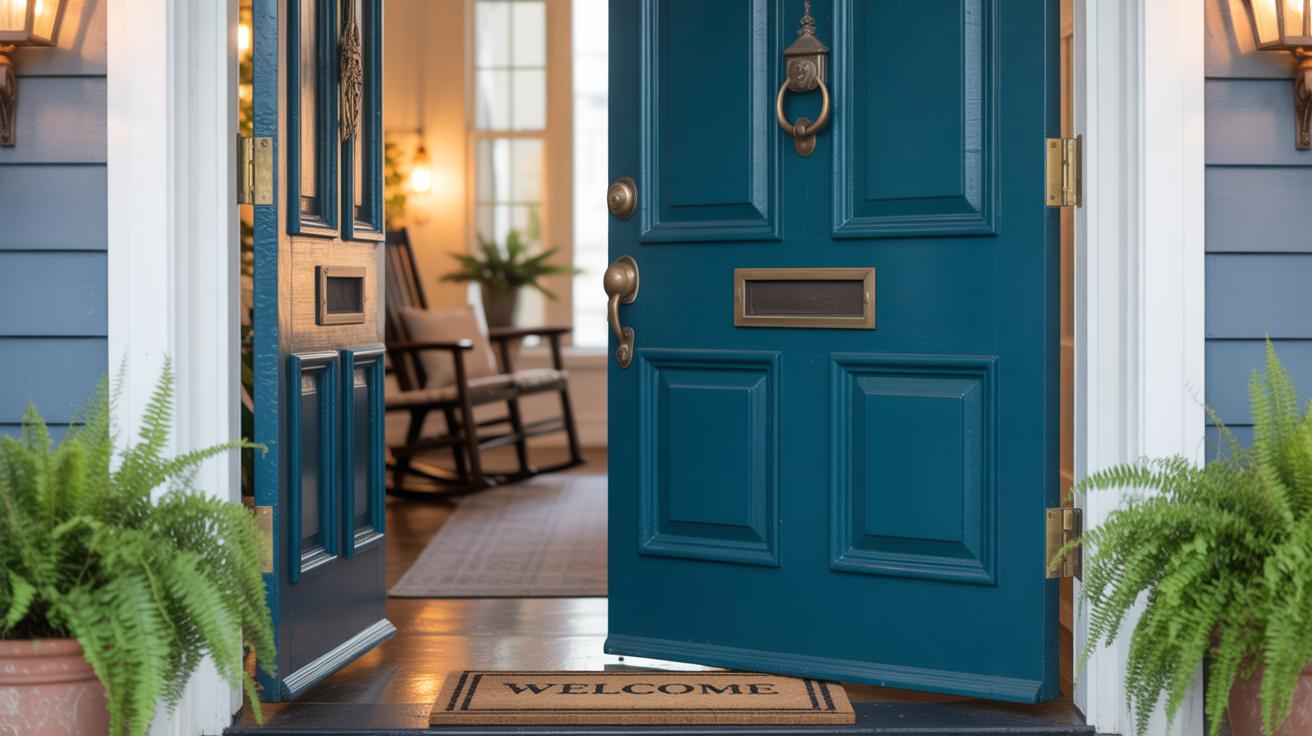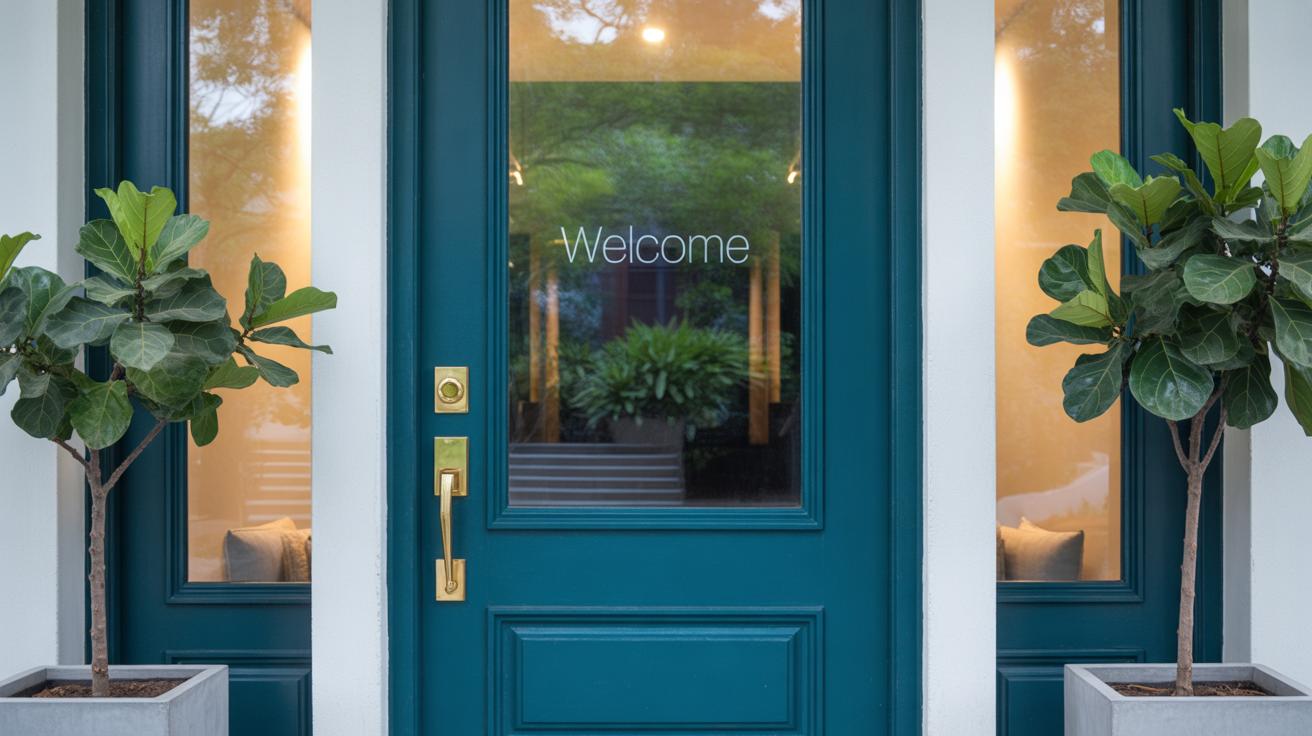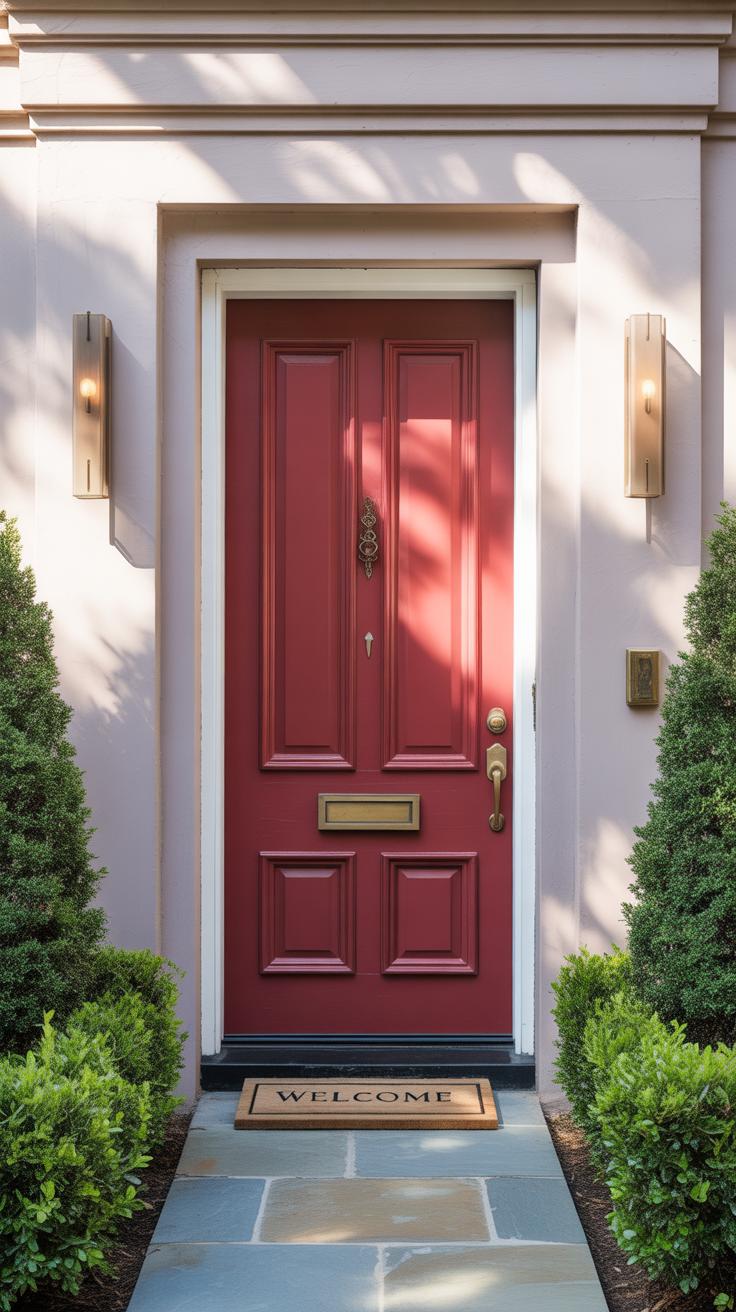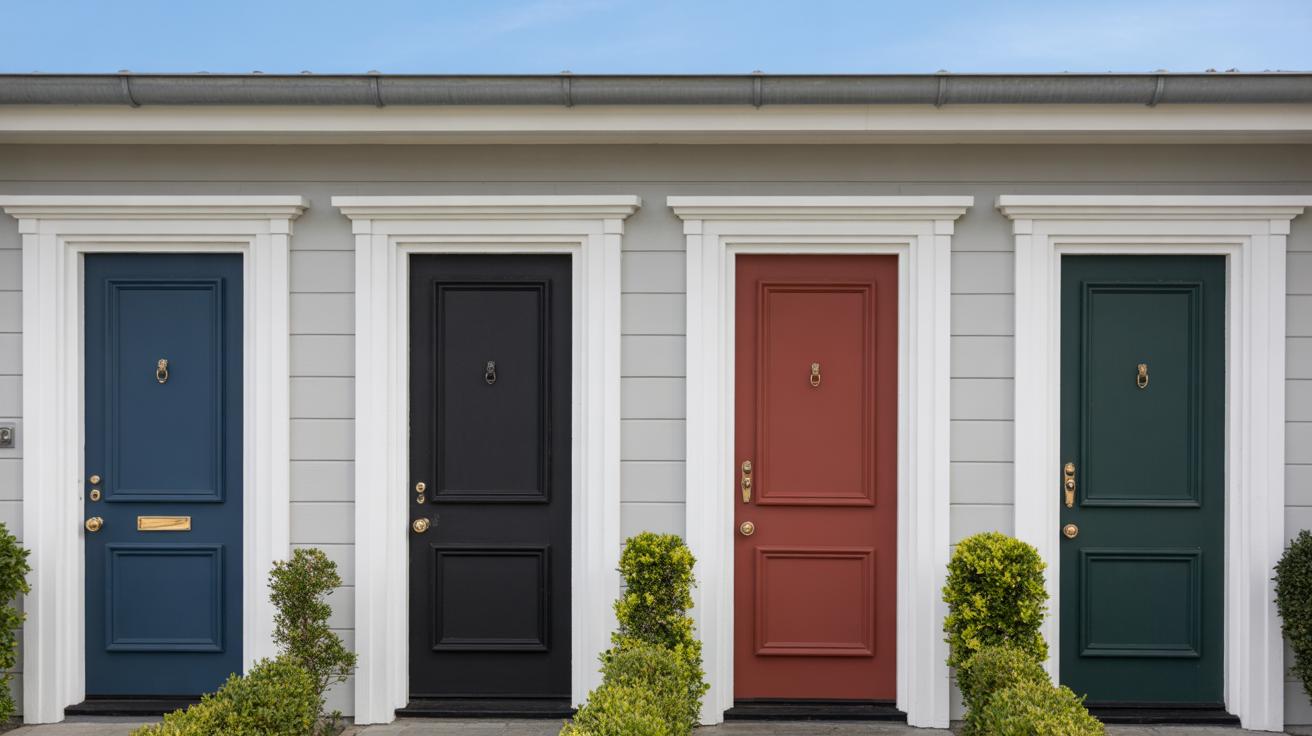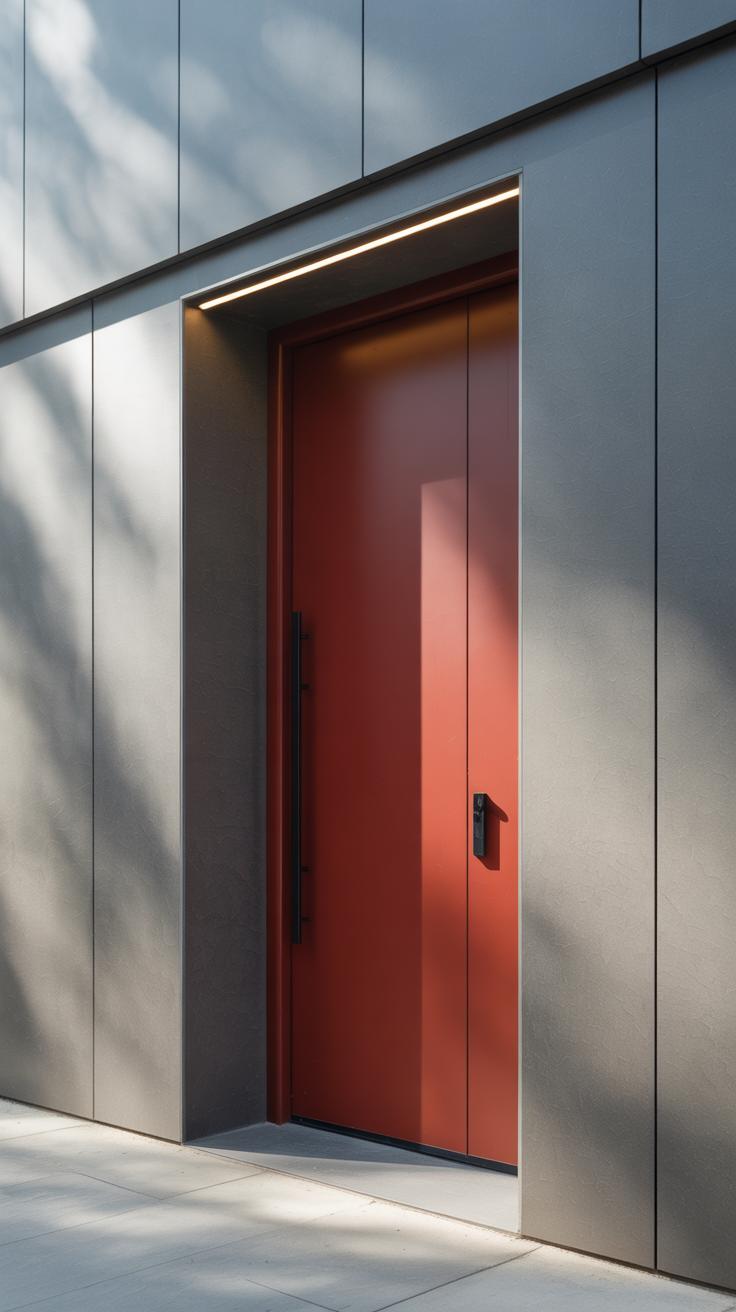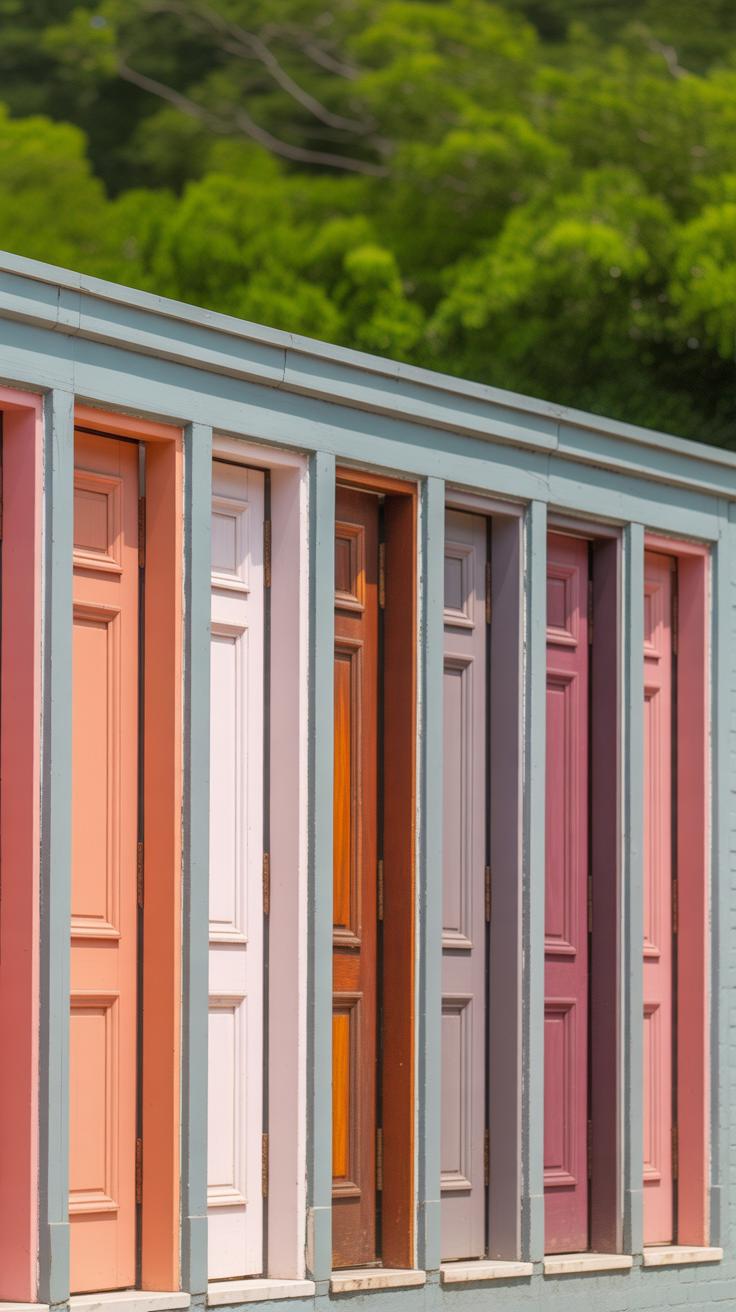Introduction
A red front door can say a lot about the home and the people inside. It’s more than just a splash of color. It can hold deep meanings and give your house a clear first impression. This article looks at the history and symbolism of red front doors to help you understand what they represent. We’ll also talk about the best red hues to use, so you can pick the perfect one for your home.
Many people choose a red door to invite good feelings and energy. The right shade of red can make your entry stand out and feel welcoming. Whether you want a bold look or a softer touch, you’ll find useful ideas here. Let’s discover what your red front door can mean and how to make it a beautiful accent for your house.
The History of Red Doors Across Cultures
Red Doors in Ancient Civilizations
Red doors have been around for centuries, and their meanings are often tied to the cultures that used them. In ancient China, for example, red was a color that symbolized luck and protection. Families painted their doors red to keep evil spirits away and invite happiness. It wasn’t just about aesthetics; it was about safeguarding the home on a spiritual level. The red hue was also linked to the element of fire, believed to bring warmth and energy.
Early American settlers also favored red fronts. Instead of choosing red for symbolism alone, they often used it practically—the paint was cheaper and more durable. Yet, over time, the red door gained deeper meanings for them. It signaled that a home was paid off and debt-free, a kind of silent announcement of financial stability. Such traditions show how red doors carried both practical and symbolic weight in ancient times.
Red Doors in Modern Traditions
Today, red doors still carry weight but in more varied ways, depending on where you live. In Scotland, a red door traditionally meant the homeowner had paid their mortgage, much like the early American custom. Meanwhile, in Feng Shui practice, a red door represents an open welcome and positive energy flowing into the house—some people still choose red doors mainly for this reason. Elsewhere, red doors can signal hospitality or even a willingness to offer shelter, like during the Underground Railroad era in the U.S.
Yet, some might say the meaning has diluted over time. Now, folks paint their doors red simply because they like the color or want to brighten the entrance. Still, when you see a red door, you might wonder: Are you stepping into history, tradition, or just someone’s personal taste? There’s something about that bold splash of color that invites questions and invites you in, regardless of the exact reason behind it.
What Does a Red Front Door Symbolize
A red front door carries a number of meanings that sometimes overlap, sometimes contradict. For many, it’s a sign of welcome. You’ll often hear that a red door invites guests in warmly, signaling a friendly, open home. It’s like a visual handshake—clearly stating that visitors are accepted, even encouraged. I’ve noticed this myself when seeing red doors in neighborhoods; they do seem to draw people closer, almost as if the color says, “Come on in, you’ll be safe here.”
But that’s not all. The color red also connects with protection. Some traditions suggest that painting your door red will keep danger and evil spirits away. This belief pops up in different cultures and spiritual practices, where red acts as a shield. Whether or not you hold those views, it’s interesting that so many people have turned to the red door as a kind of symbolic barrier against harm.
Then there’s the matter of status. Historically, a red door could point to a home of standing or significance. In some places, a red door indicated that the owner had paid off their mortgage—though I’m not sure how widely that idea stuck. It’s a subtle sort of signal, perhaps boasting confidence or success without shouting. It’s curious how a single color takes on so many meanings simultaneously. What meaning do you feel most drawn to when you see a red door?
Red Doors as a Sign of Welcome
When you think about inviting people into your home, the front door plays a huge role. Choosing red can change the mood instantly—making your entrance feel warm and alive. It’s almost like the door itself is happy to see visitors. You might notice that neighbors with red doors sometimes have a livelier social scene, although that’s just an observation, not a rule.
There’s also a practical side to it. Red stands out, which can help guests find your house easier. But it’s not just about visibility; it’s about the atmosphere it creates at first sight. A red door seems to say, “You’re wanted here,” which can make all the difference on a gloomy afternoon or when stepping into a new town.
Red Doors and Protection Beliefs
The idea that red doors protect homes traces back to several old-world beliefs. For example, in some cultures, a red door was painted to keep negative energies or evil spirits from entering. This concept is still alive in certain spiritual or folk traditions, where red acts like a barrier or warning.
Think of it this way: red is a bold color that demands attention. That very boldness might be why it’s linked with protection. There’s also a practical angle—red paint was often more durable or made from substances thought to repel pests or decay. So, protection might’ve started as a practical choice before gaining a mystical touch.
Do you think those old protective beliefs still influence how people choose red for their front doors today? Or have they become more about aesthetics and personal expression? It’s a question that’s still open, at least in my mind.
Psychology of Red Colors for Front Doors
How Red Influences Mood and Emotions
Red is a color that grabs attention fast. It often stirs up feelings like excitement and energy—almost like it wakes up the senses. You might notice your heart rate quickens or your focus sharpens when you see something red. That’s not just imagination; studies show red can raise adrenaline and even boost confidence. But red isn’t just about hype. It also carries a sense of security. Think about stop signs or warning lights that use red to demand attention and respect. That same sense of authority can make a red front door feel like a stronghold, a place that’s protected and grounded.
Still, red’s power can feel intense. For some, it’s warmer and inviting; for others, maybe a bit too bold or overwhelming. So, the emotional response to red really depends on how you relate to it personally—and maybe how you’re feeling that day. It’s complex, and that’s part of why it’s such a fascinating choice for a front door.
Red Doors and First Impressions
Walk up to a home with a red front door, and you’re met with a strong statement right away. A red door doesn’t just blend in; it stands out, and that changes how we immediately perceive the space. Often, it’s seen as welcoming and warm, suggesting that the people inside are confident and lively. But it can also hint at boldness or a flair for the dramatic, sometimes even a bit mysterious.
When guests see a red door, they might expect energy or passion inside. It can spark curiosity—“Who lives here?” you might wonder. At the same time, a red door can feel approachable, even if a bit assertive. It sets the tone before you even step in, shaping visitors’ emotions and expectations. So, choosing red means shaping first impressions in a way that is, well, hard to forget.
Choosing the Right Shade of Red for Your Door
Picking a red shade for your front door isn’t as straightforward as it might seem. There’s a broad spectrum to consider, from fiery crimsons to muted burgundies, each carrying a slightly different vibe and message.
Bright reds, for example, often feel energetic and welcoming. They can catch the eye immediately and work well if you want your entrance to stand out. Think of those almost scarlet tones that seem to shout “come on in.” They work nicely on homes with neutral exteriors—white, gray, or beige—because the contrast really pops.
Deep reds, meanwhile, tend to bring warmth and a sense of tradition or seriousness. Shades like maroon or brick red might not scream for attention but offer a subtle, steady charm that suits historic homes or things like colonial and Victorian styles. They blend a bit more with darker or earth-toned sidings.
So, which you choose depends on your home’s personality and what feeling you want at the threshold.
Bright Red Vs Deep Red
Bright reds are hard to miss. They feel youthful and lively. Use them if you want to highlight your door as a focal point or if your neighborhood leans toward modern designs. For example, a bright cherry-red door works great on a sleek suburban home with white trim.
Deep reds feel more grounded. They suggest stability and history. A deep oxblood door, for instance, pairs well with brick exteriors or dark wood and doesn’t clash with green landscaping. But sometimes, these darker reds can feel a bit heavy or too formal if the rest of your home is lighter or more casual.
Matching Red Shades With Home Styles
Choosing a red that fits your architectural style and exterior colors is essential. Here are some pointers that might help:
- Traditional homes: Go for richer, darker shades like burgundy or oxblood to complement classic lines and materials.
- Modern or minimalist houses: Bright reds with a clean finish often suit the simple shapes and neutral palettes.
- Cottages and farmhouses: Warm reds—think tomato or rust—blend nicely with natural wood and stone.
- Brick exteriors: A subtle or muted red usually keeps the door from blending in too much, but also avoids jarring contrast.
- White or pale homes: Almost any red works here, but consider the tone—vivid reds create a dramatic spark, while softer reds add warmth without overwhelming.
So, the shade you lean toward should reflect both how bold you want to be and what your house already “says.” It’s a bit like picking an outfit that fits both your mood and the occasion.
Maintaining and Painting a Red Front Door
Painting a red front door isn’t just about slapping on color. You need to prepare carefully to get a finish that lasts and looks good. Start by removing dirt, grease, and any old, peeling paint. Use a gentle detergent and clean water—don’t skip this step, or the paint might not stick well.
Once clean, sanding is next. Sanding smooths rough spots and helps the paint adhere. I usually use medium grit, but if your door’s in rough shape, start coarser. After sanding, wipe off the dust with a damp cloth before priming.
Priming is crucial, especially under red paint. Red pigments tend to fade or bleed without a good base. Apply a quality exterior primer designed for wood or metal, depending on your door. This helps keep the shade rich and prevents peeling.
When picking paint, look for exterior-specific formulas that handle sun, rain, and temperature shifts. Acrylic latex paints are great—they’re flexible and resist cracking. Oil-based paints last long too but might yellow slightly over time. For a red door, a paint with UV protection is a smart choice to keep the hue vibrant.
Maintaining your door means occasional cleaning and a yearly check for chips or fading. Touch ups go a long way. If you notice your door looking dull or worn after a few years, repainting is easier when you’ve kept the surface smooth and cleaned regularly.
Does your front door face lots of direct sun or harsh weather? It’s probably worth investing in a paint that advertises durability for extreme conditions. It’s a small step but can save headaches later.
Using Red Doors to Increase Home Value
Red doors often stand out in neighborhoods, and that attention can work in your favor when it comes to home value. From a real estate point of view, a red front door can make your home more memorable—and that can translate into a quicker sale or, sometimes, a higher offer. You know how some houses just catch your eye immediately? A splash of red on the entrance often does that.
Buyers tend to notice a well-chosen red door because it adds character without going overboard. It suggests confidence about the home’s appearance, maybe even care and upkeep. Some agents even claim it sends a subtle welcoming message, drawing emotional interest before buyers step inside.
When thinking about resale, refreshing or installing a red front door feels like a small investment with tangible returns. It’s usually less expensive than other curb appeal upgrades but can refresh the whole look of the exterior. Plus, it’s decisive—a color choice that feels clear and bold rather than bland or safe.
- Red doors attract attention and create a focal point at the home’s entrance.
- They can hint at a well-maintained property and reflect the owner’s personality.
- Refreshing a front door with red paint often requires minimal effort but increases perceived value.
- Red doors tend to make listings more appealing in competitive markets.
Still, it’s tricky to say if every buyer loves the shade of red you pick—or red doors in general. Real estate tastes vary, and sometimes the risk is worth it, especially if the color complements your home’s style. I guess that makes you wonder; when is red too bold for your neighborhood? It’s worth weighing but often pays off in curb appeal and value.
Red Front Door Trends in Home Design
Red front doors keep popping up in home design, but the shade you pick can totally change the mood. These days, people lean toward a mix of classic and bold reds, but not the bright candy apple you might expect. Shades like deep crimson, brick red, and even a bit of rusty red are quite popular. They feel grounded, not too flashy, and they pair well with a lot of exterior styles.
Styles vary too—from sleek, modern flat-panel doors painted red to more traditional paneled or craftsman-style doors. Sometimes, a matte finish is chosen for a more natural, subtle look, while others go with high-gloss for that attention-grabbing effect. It depends on whether you want your door to be a statement or more of an inviting whisper.
Current Popular Shades of Red
Some reds keep standing out right now:
- Firebrick Red – a warm, earthy tone that feels approachable without being overwhelming
- Cherry Red – a bit bolder, still classic and lively enough to brighten any porch
- Rusty Red – almost with a hint of orange, which can feel a bit vintage or rustic
- Burgundy – deep and rich, excellent if you want something refined but still eye-catching
It’s interesting how small shifts in shade change the story of the door, isn’t it? A slight move toward burgundy might make the entrance feel more sophisticated, while firebrick adds warmth.
Combining Red Doors With Other Design Elements
A red door alone won’t tell the whole story. Pairing it with the right elements can either make it pop or feel a bit off.
Think about lighting: lantern-style sconces with black or bronze finishes give a bit of classic charm, while sleek metallic fixtures can feel modern. And hardware—knobs, knockers, maybe a smart lock in brass or matte black—can either highlight the red or tone it down.
Landscaping also matters. Greenery with rich leaf textures—like boxwoods or ferns—contrasts nicely with red. You might also try potted plants with subtle blooms in whites or soft pinks nearby to soften the boldness.
If your exterior is neutral, a red door shines as a focal point. But if your siding is already colorful, you might want to be more subtle with door shade or accents.
Alternative Colors Inspired by Red Doors
Red doors are striking, but sometimes you want something a bit less intense while keeping that warm, inviting allure. That’s where related shades like coral, burgundy, and rust come in. These colors borrow the essence of red but offer subtle differences that might suit your home better, especially if a fiery red feels like too much.
Coral, for instance, blends pink and orange tones. It feels lively but softer than a traditional red. It’s perfect if you want your entrance to stand out gently, maybe reflecting a breezy, relaxed vibe without losing energy.
Burgundy carries depth—it’s almost like red with a shadow. This shade hints at richness and tradition, but it can also feel a bit moody depending on the light. It’s a choice for those who want something sophisticated yet connected to red’s symbolism.
Rust offers earthiness. It leans toward orange-brown, giving a rustic charm. Rust doors can feel cozy in a way that bright red doesn’t—there’s a grounded quality that might appeal if you enjoy natural tones but want warmth.
Choosing softer reds means less visual noise but keeps an impact. These tones can complement varied house exteriors without overpowering them. Maybe your door should invite curiosity rather than shout hello. Or perhaps you want a toned-down statement that ages gracefully, fading less boldly over time.
Have you considered what mood you’d like your entryway to suggest? Sometimes quieter colors tell a story as well as bold ones, just in different ways. Exploring these softened reds might surprise you.
Conclusions
Red front doors carry history and feelings from different cultures. They can mean safety, welcome, love, or just a bold style. Choosing the right red shade helps show your home’s personality and creates a warm welcome for visitors. From bright reds to deep hues, there’s a shade for every taste and home style.
Thinking about a red front door? Remember, it’s a simple way to add character and feel to your home. Picking the right meaning and shade makes your door more than just an entry. It’s a statement about you and your home’s story. Start your red door adventure today and see how it changes the look and feel of your home.

